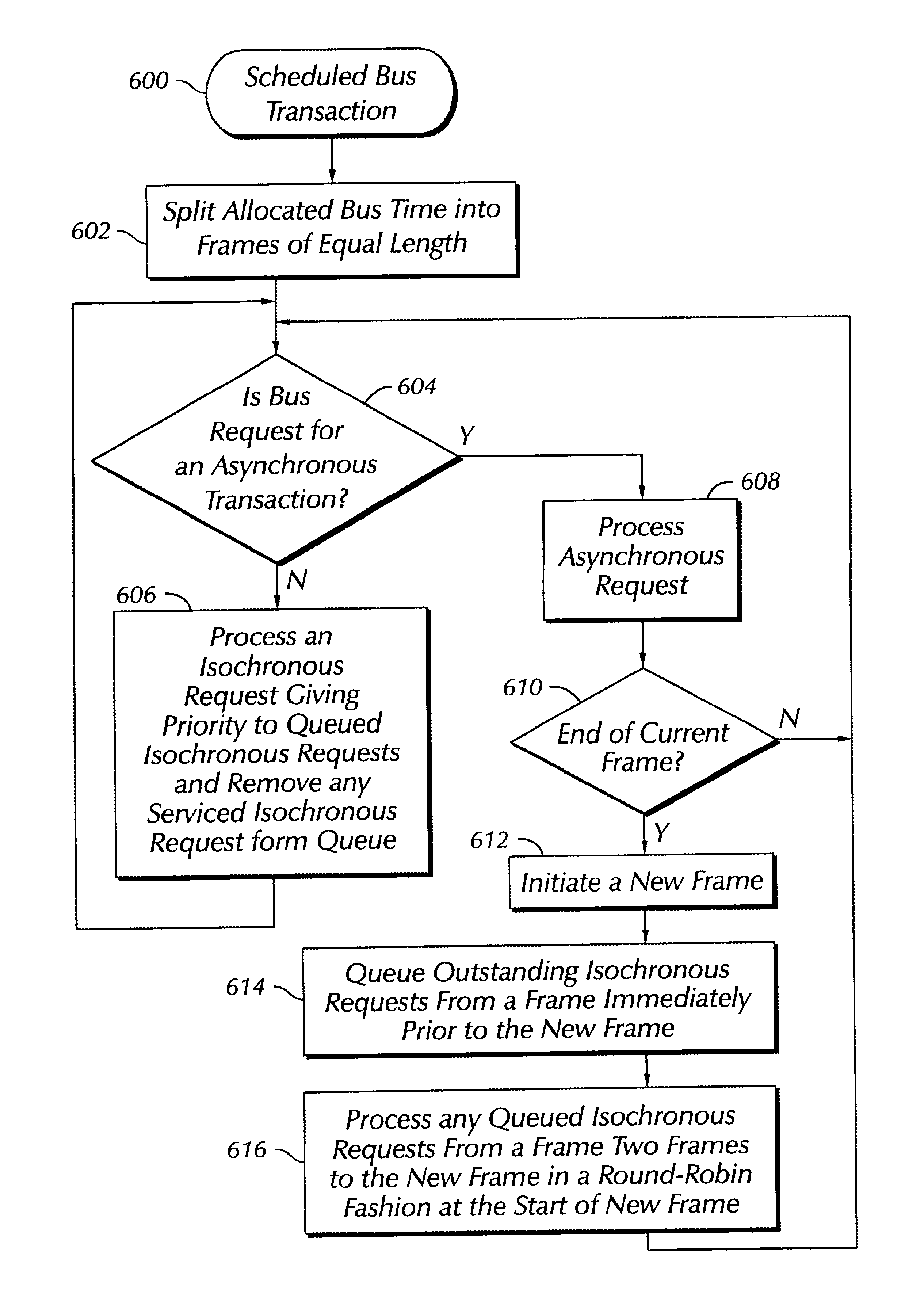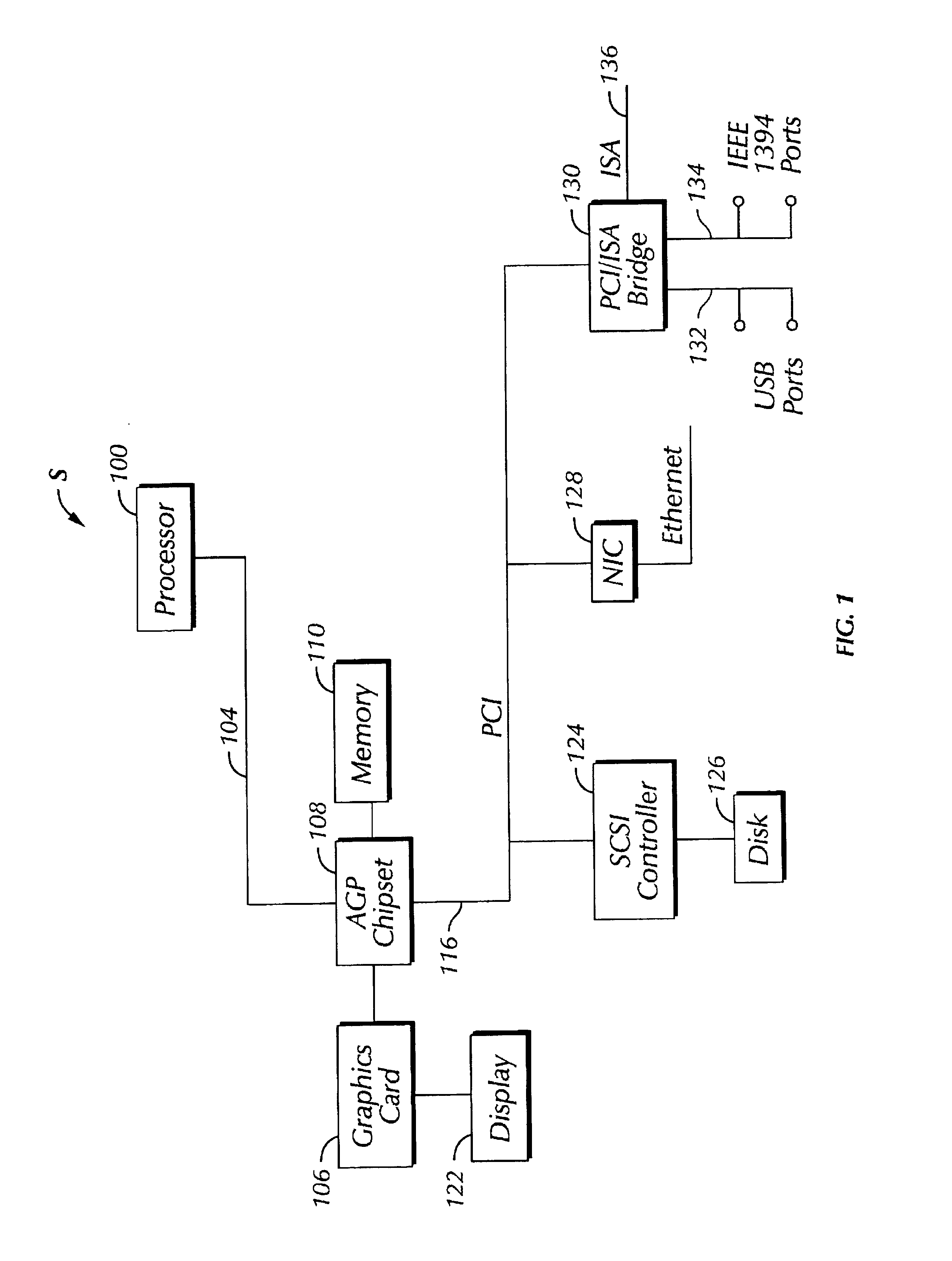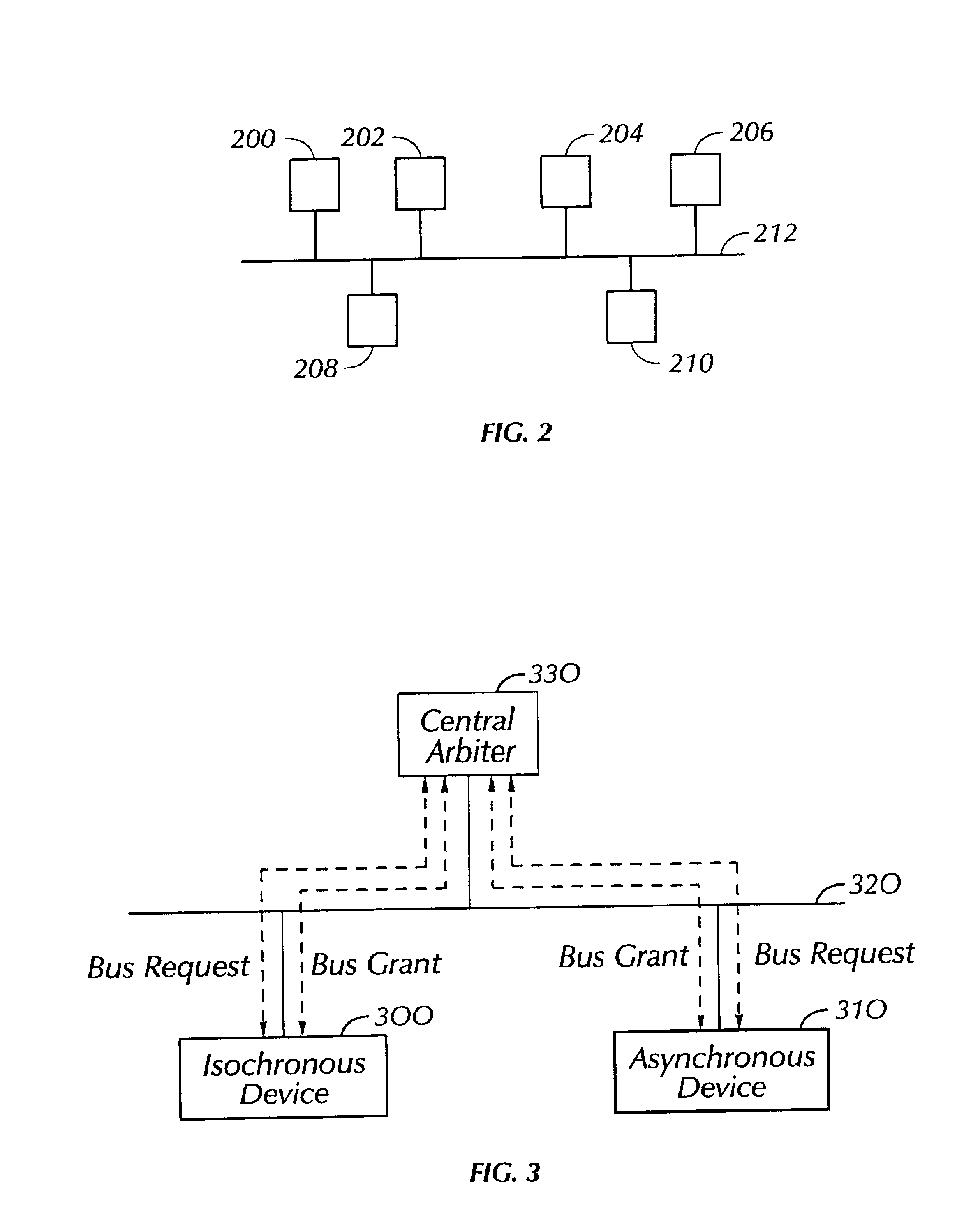Priority mechanism for scheduling isochronous and asynchronous transactions on a shared bus
a technology of isochronous and asynchronous transactions, applied in the direction of multi-programming arrangements, instruments, electric digital data processing, etc., can solve the problems of increasing the latency of asynchronous requests, requiring a certain bandwidth and worst-case latency, adversely affecting the performance of the computer system,
- Summary
- Abstract
- Description
- Claims
- Application Information
AI Technical Summary
Benefits of technology
Problems solved by technology
Method used
Image
Examples
Embodiment Construction
Turning to FIG. 1, illustrated is a block diagram of a computer system S according to an embodiment of the present invention. Processor 100 is coupled to a host bus 104. The processor 100 in the preferred embodiment is a Pentium II processor manufactured by the Intel Corporation. Alternatively, the present invention could be implemented in a multiprocessor workstation or any other computer system that utilizes a shared bus to carry asynchronous and isochronous traffic. Also coupled to the host bus 104 is a chipset 108. The chipset 108, as disclosed, is an accelerated graphics port (AGP) chipset which can be a 440BX AGPset manufactured by the Intel Corporation. The chipset 108 provides a memory controller for controlling memory 110, a host-PCI bus bridge for coupling a PCI bus 116 to the host bus 104, and an AGP connector for connecting a graphics card 106. A display 122, as shown, is coupled to the graphics card 106.
Coupled to the PCI bus 116 is a small computer system interface (SC...
PUM
 Login to View More
Login to View More Abstract
Description
Claims
Application Information
 Login to View More
Login to View More - R&D
- Intellectual Property
- Life Sciences
- Materials
- Tech Scout
- Unparalleled Data Quality
- Higher Quality Content
- 60% Fewer Hallucinations
Browse by: Latest US Patents, China's latest patents, Technical Efficacy Thesaurus, Application Domain, Technology Topic, Popular Technical Reports.
© 2025 PatSnap. All rights reserved.Legal|Privacy policy|Modern Slavery Act Transparency Statement|Sitemap|About US| Contact US: help@patsnap.com



